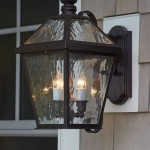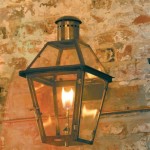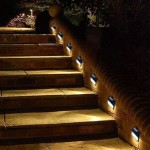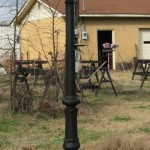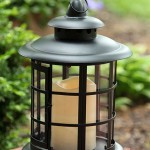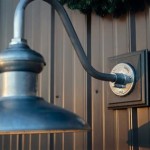Outdoor Bollard Lights: Essential Aspects of Cost
Bollard lights, a ubiquitous feature of outdoor landscapes, play a crucial role in illuminating pathways, driveways, and other areas while enhancing the aesthetic appeal. However, when considering incorporating these lighting fixtures into your outdoor space, understanding the cost factors associated with them is essential.
1. Material and Design
The material and design of bollard lights significantly impact their cost. Cast aluminum, a durable and corrosion-resistant metal, is commonly used, offering a wide range of styles and finishes. However, it tends to be more expensive than steel or plastic counterparts. The complexity of the design, including intricate detailing or custom shapes, also contributes to higher costs.
2. Size and Height
The size and height of bollard lights determine the amount of material used and the required labor for installation. Taller bollards with larger bases generally cost more due to the increased material and labor requirements. Consider the height and size carefully to ensure they complement the surrounding space without compromising functionality.
3. Number of Lights
The number of bollard lights required for adequate illumination influences the overall cost. Determine the desired spacing between bollards, considering factors such as the width of the pathway or area to be lit, and estimate the quantity accordingly. Purchasing multiple bollards at once may result in bulk discounts.
4. Light Source
The light source, whether traditional incandescent bulbs, energy-efficient LEDs, or solar-powered, affects the cost. LED bollards are generally more expensive initially but offer significant energy savings and longer lifespans, making them a more cost-effective option in the long run.
5. Installation Costs
Installation costs should be considered alongside the cost of the bollard lights themselves. Factors such as the soil conditions, the presence of underground utilities, and the need for trenching or wiring can impact the labor time and additional materials required. Hiring a qualified electrician ensures proper installation and minimizes potential safety hazards.
6. Additional Features
Additional features, such as motion sensors, timers, or remote control capabilities, enhance convenience and functionality but can add to the overall cost. Motion sensors automatically turn on lights when movement is detected, reducing energy consumption. Timers allow for scheduled lighting, while remote control offers convenient operation.
7. Maintenance and Repairs
Ongoing maintenance and repairs should be included in the cost considerations. Regular cleaning and bulb replacements are essential to maintain optimal performance. Consider the accessibility of the bollards and the availability of replacement parts. Durable materials and weather-resistant designs minimize maintenance and repair costs over time.
Conclusion
The cost of outdoor bollard lights is influenced by several factors, including material, design, size, quantity, light source, installation costs, additional features, and maintenance requirements. By carefully considering these aspects and prioritizing functionality, durability, and energy efficiency, you can make informed decisions that enhance the aesthetics and safety of your outdoor spaces while staying within your budget.

Exterior Bollard Lights At Light11 Eu

Exterior Bollard Lights At Light11 Eu

Philips Mygarden Arbour Led Bollard Light 164639316 Reuter

Exterior Bollard Lights At Light11 Eu

Arihantstar 12w Round 24in Modern Bollard Garden Light

Flix Adjustable Bollard Outdoor Lighting For House The Look

Arihantstar 12w Round 24in Modern Bollard Garden Light

Fumagalli Ester Led Black Outdoor Bollard Light Lighting Co Za

Cool White Solar Panel Bollard Lights 3 Bollards Silhouette Hoselink

Solar Bollard Lights With 10 Lumen Super Bright White Led Bulbs
Related Posts
